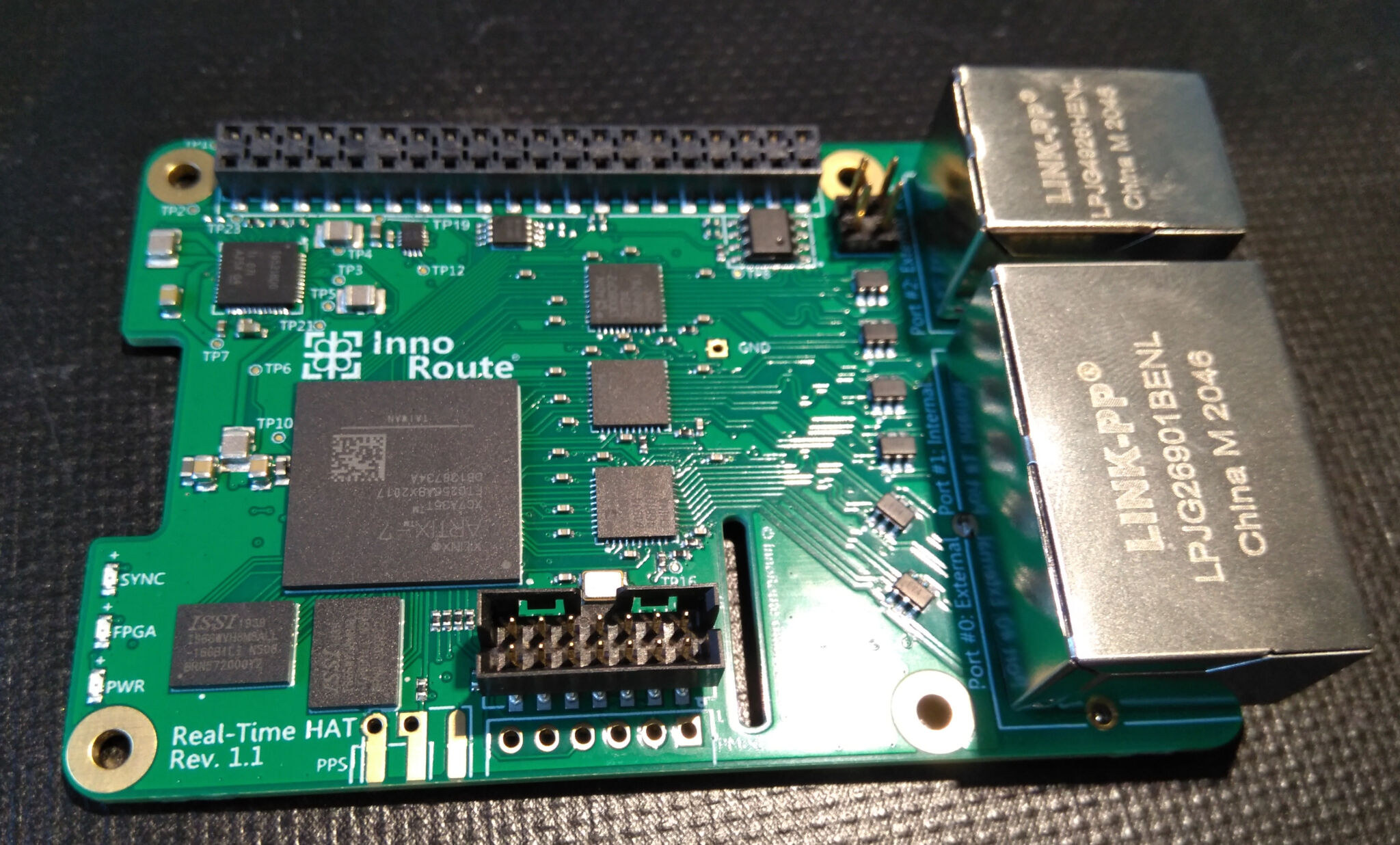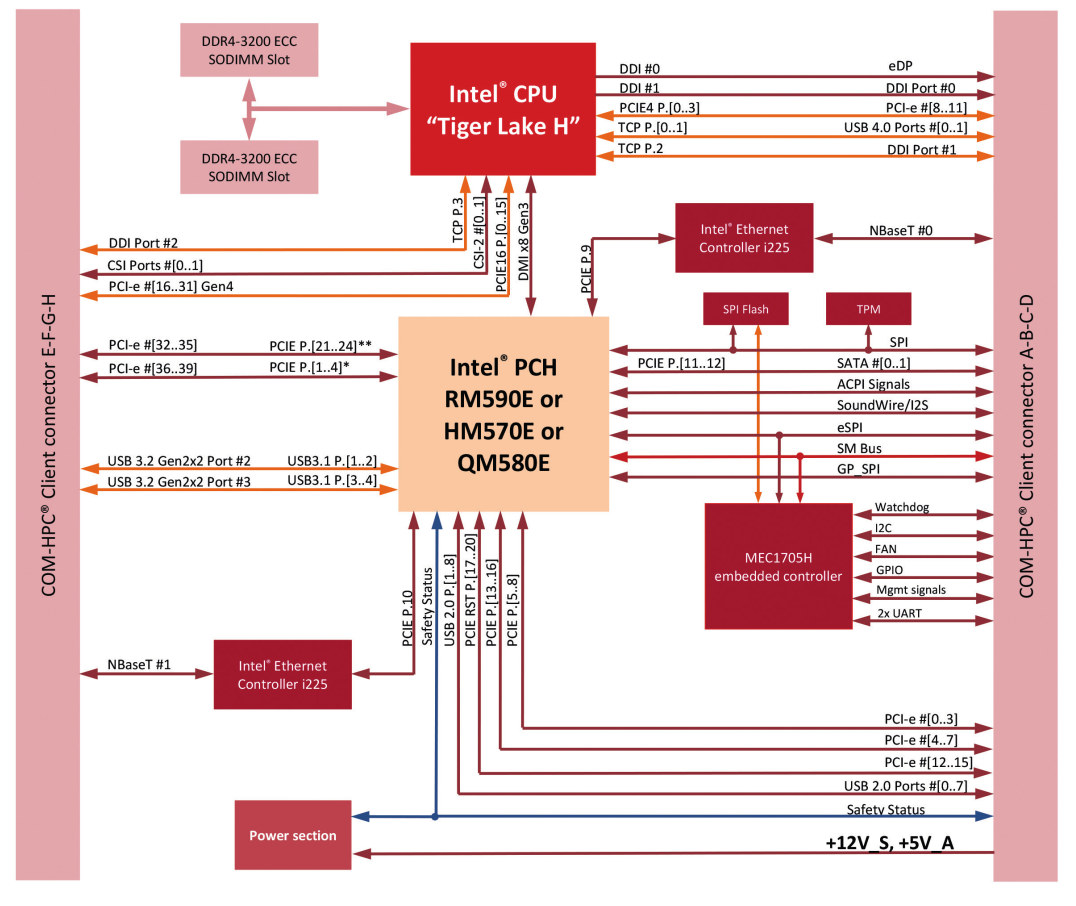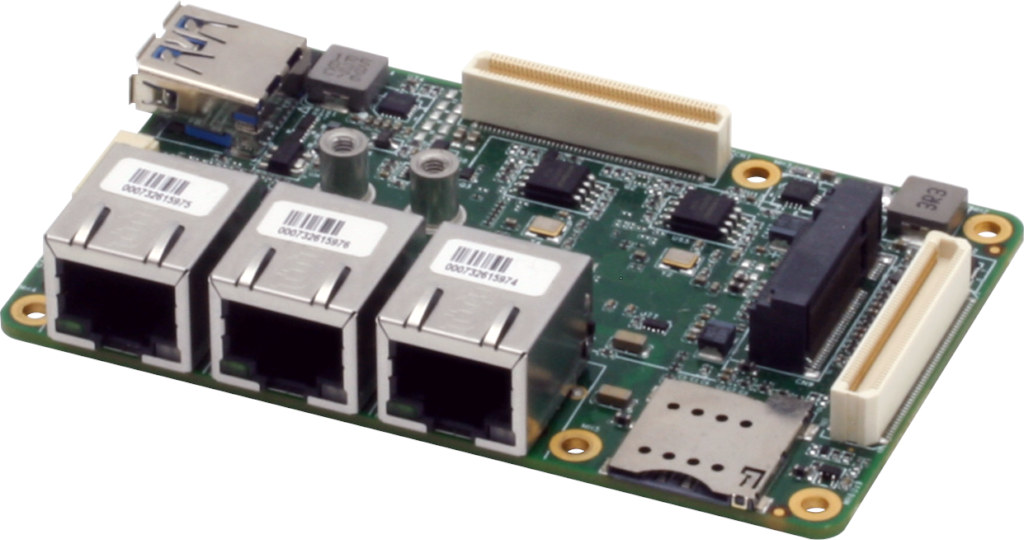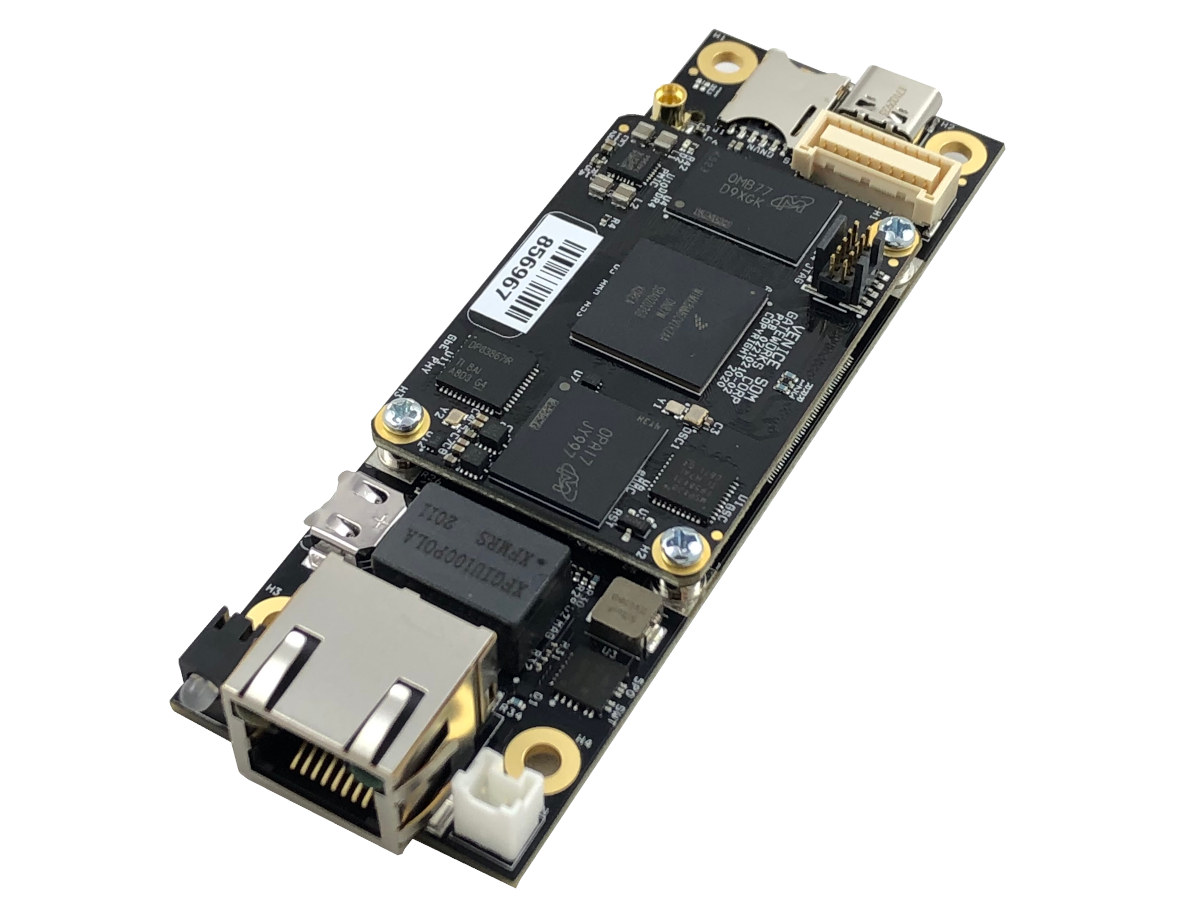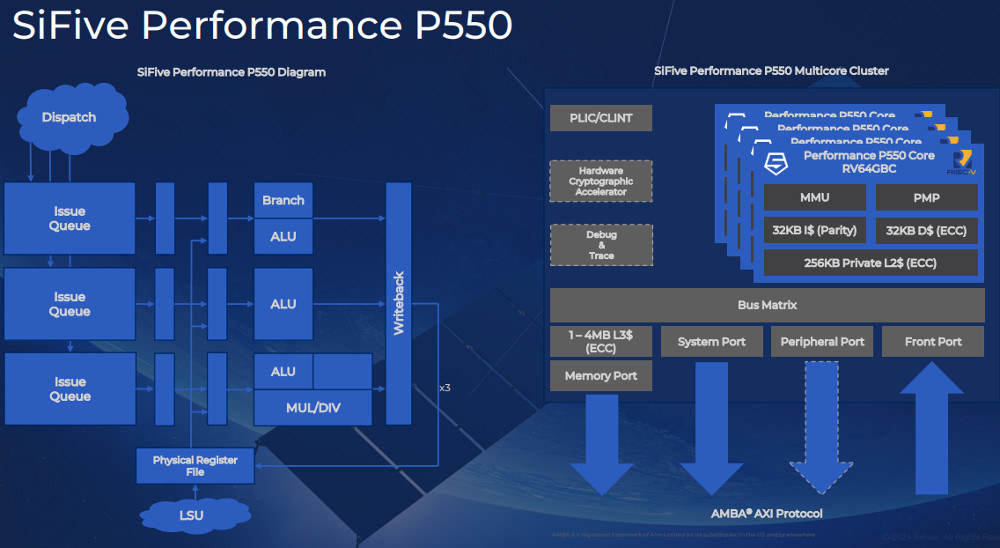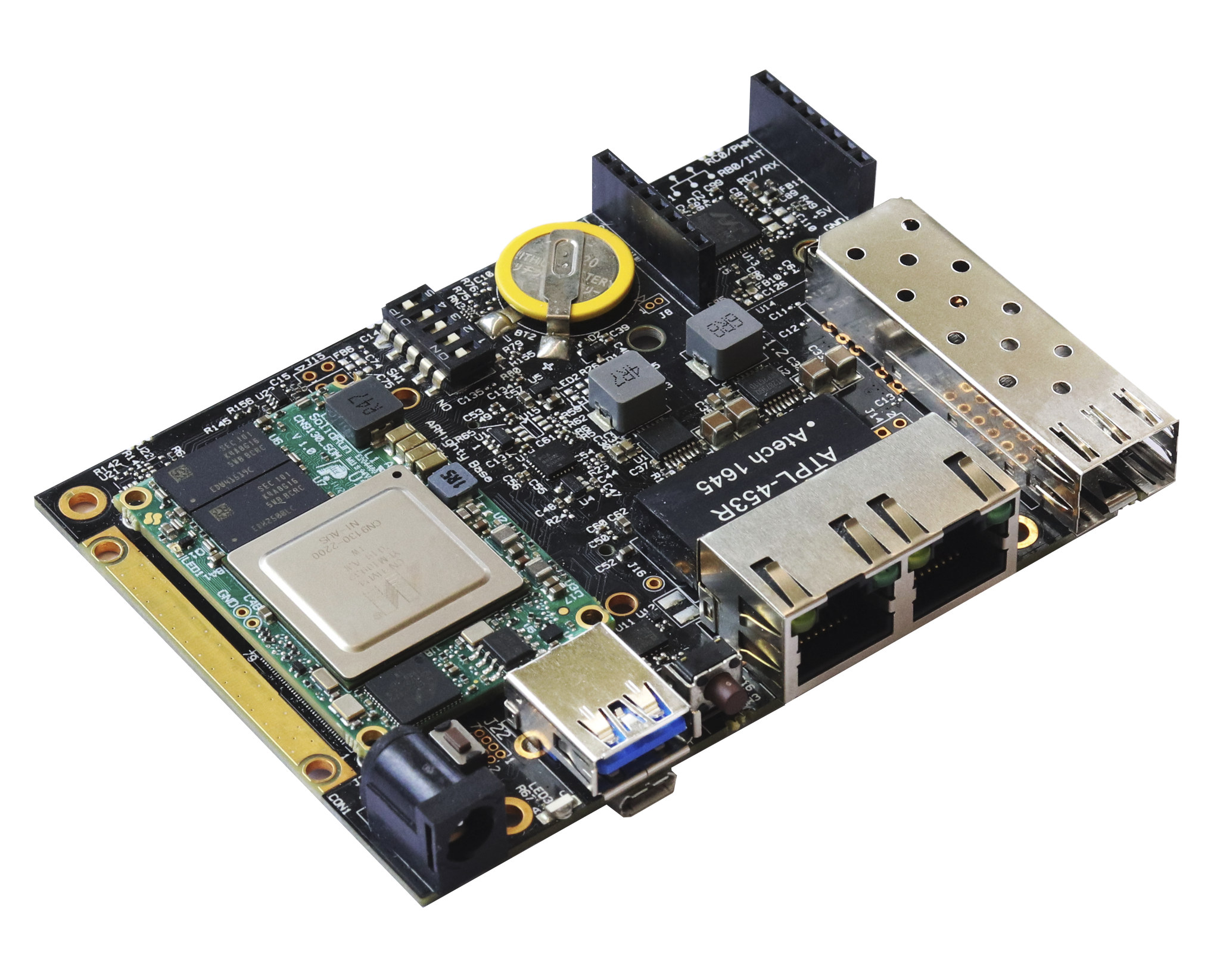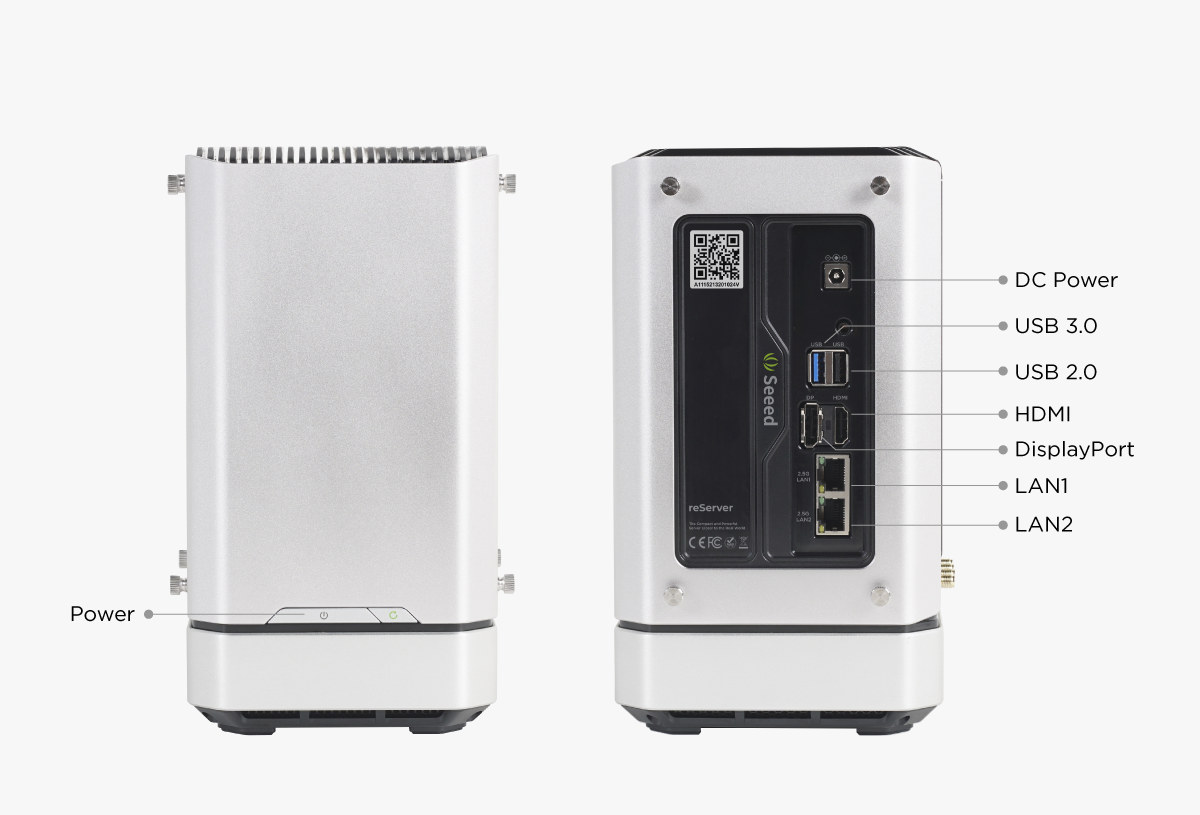InnoRoute Real-Time HAT adds IEEE1588 Precision Time Protocol (PTP) to Raspberry Pi 4/3 via a Xilinx Artix-7 FPGA and three Gigabit Ethernet ports. The Precision Time Protocol (PTP) is used to very accurately synchronize clocks throughout a computer network to enable measurement and control systems. It is often found in embedded microcontrollers or processors from Texas Instruments, STMicro, and more recently, in Intel Elkhart Lake & Tiger Lake H processors. It can notably be used for Time-Sensitive Networking (TSN) and Audio Video Bridging (AVB). InnoRoute Real-time HAT specifications & key features: FPGA- Xilinx Artik-7 FPGA Some RAM Networking Gigabit Ethernet port 0 with IEEE1588/TSN signaling Gigabit Ethernet port 1 with input from Raspberry Pi 4 Gigabit Ethernet port 2 with PoE, without TSN Host interface – 40-pin Raspberry Pi header mostly for SPI and I2C interfaces used for configuration. Misc – 3x LEDs, JTAG and PMod connectors, EEPROM (for Raspberry […]
25-45W Intel Tiger Lake-H Xeon, Core, and Celeron embedded processors coming soon
While doing some research, I noticed an Intel Core i7-11850HE “Tiger Lake-H” processor on the OpenVino Toolkit website. Parts that end with “E” are usually processors designed for the embedded market. I had never heard about the Tiger Lake-H embedded family, so I looked for “i7-11850HE” processor, and it’s not in Intel Ark, or much anywhere else except on a page in Google Cache, about a COM-HPC module “with the 11th Gen Intel® Xeon® W-11000E Series, Core™ vPro® and Celeron® processors (formerly Tiger Lake-H) for FuSa application”. There we have a list of Xeon, Core, and Celeron 11th generation processors that I don’t think have ever been announced: Intel Celeron 6600HE dual-core processor @ 2.6GHz with 8MB L3 Cache, 35W TDP Intel Core i3-11100HE processor with 4 cores / 8 threads @ 2.4GHz (up to 4.4GHz in Turbo Boost) with 8MB L3 Cache, 45/35W cTDP Intel Core vPRO i5-11500HE processor […]
UP Connect Plus adds 5G support, 3 GbE ports to UP Core Plus, UP Xtreme SBCs
AAEON UP Connect Plus is a carrier board with three Gigabit Ethernet (GbE) ports, and an M.2 slot plus a micro SIM card socket adding support for 5G cellular connectivity to the company’s Appolo Lake-based UP Core Plus and Whiskey Lake-powered UP Xtreme single board computers. UP Connect Plus specifications: Connectivity 3 Gigabit Ethernet RJ45 ports in two configurations: 3x Intel Ethernet Controller I211-AT 3x Intel Ethernet Controller I210-IT with wide temperature and TSN (Time-sensitive Networking) 5G cellular – M.2 3042/3052 colay socket with micro-SIM card port to support 4G/5G modules USB – 1x USB 3.0 Type-A port for UP Core Plus only PCIe – 1x 2 channel PCIe switch SBC connectors – 2x 100-pin high-speed docking connectors Power Supply – 12V/5V from the main board Power Consumption – Approximately 36 to 40 Watts with UP Core Plus + UP Connect Plus Dimensions – 90 mm x 56 mm Temperature […]
Venice GW7100 compact industrial SBC packs one Gigabit Ethernet port, one mPCIe socket
Gateworks introduced the new Venice Industrial IoT SBC Family based on NXP i.MX 8M Mini processor with up to two Ethernet ports and four mPCIe Sockets last September starting with GW7300 board with dual Gigabit Ethernet and three mPCIe sockets. But the US company has now announced the availability of the smallest member of the family with Venice GW7100 SBC equipped with just one Gigabit Ethernet port and one mPCIe socket in a compact 100x35mm form factor. Venice GW7100 specifications: SoC – NXP i.MX 8M Mini single, dual or quad-core Arm Cortex-A53 processor @ up to 1.6GHz, with Arm Cortex-M4 at 400+MHz, 3D GPU (OpenGL ES 2.0), 2D GPU, and 1080p VPU System Memory – 1 GB LPDDR4 (up to 4GB) Storage – 8 GB eMMC flash (up to 64GB) Connectivity 1x Gigabit Ethernet RJ45 port with passive PoE support WiFi/Bluetooth or Cellular connectivity via mini PCIe socket and Nano-SIM […]
SiFive Performance P550 is the fastest 64-bit RISC-V processor so far
SiFive has announced two RISC-V “Performance” cores with Performance P550 that should be the fastest 64-bit RISC-V processor so far with a SPECInt 2006 score of 8.65/GHz, as well as a Performance P270 Linux capable processor with full support for the RISC-V vector extension v1.0 rc. SiFive Performance P550 P550 highlights: RISC-V RV64GBC ISA 13 stage, 3-issue high-performance out-of-order pipeline Supports multicore coherence with up to 4 cores in a core complex Private 32KB+32KB L1 cache and a private 256KB L2 cache per core Up to 4MB L3 cache in a four-core cluster SPECint 2006 – 8.65/GHz 2.4 GHz in 7nm with a footprint of less than 0.25 mm SiFive compares the Performance P550 core to Arm’s Cortex-A75 with higher performance in SPECint2006 and SPECfp2006 integer/floating-point benchmark, all a much smaller area which would enable a quad-core P550 cluster on about the same footprint as a single Cortex-A75 core. There […]
10BASE-T1L Ethernet chips enable up to 1.7 kilometer long Ethernet cables
The maximum length of Ethernet cables used to be 100 meters. While that may be more than enough for most applications, it does not cut it for industrial communication applications. So the 10BASE-T1L Ethernet physical layer standard (IEEE 802.3cg-2019) was approved by the IEEE on November 7, 2019 to allow for cables over one kilometer using a single twisted-pair cable. Analog Devices has launched two 10BASE-T1L Ethernet chips with ADIN1100 Ethernet PHY and ADIN1110 Ethernet MAC-PHY that allow for up to 1.7 kilometer long Ethernet cables. Let’s check out ADIN1100 specifications for reference: 10BASE-T1L IEEE Std 802.3cg-2019 compliant Cable Reach 1700 meters+ with 1.0 V pk-pk 1700 meters+ with 2.4 V pk-pk Auto-Negotiation capability Supports intrinsic safety applications MII, RMII & RGMII MAC interfaces MDIO Management Interface Unmanaged configuration using pin strapping including: Master/Slave selection Transmit amplitude PHY address 25 MHz crystal oscillator/25 MHz external clock input (50 MHz external […]
ClearFog CN9130 networking boards deliver 10GbE through a tiny Octeon TX2 module
SolidRun has designed and manufactured ClearFog networking boards ever since the introduction of the Marvell ARMADA 380/388-based ClearFog Pro in 2015. Since then, more powerful models have been launched including the ClearFog GT 8K based on Marvell ARMADA A8040 quad-core Cortex A72 processor with support for 2.5GbE and 10GbE, and the ClearFog CX LX2K equipped with a 16-core Cortex-A72 NXP capable of 100GbE networking. The Israeli company unveiled its first Octeon TX2-based design last fall with ClearFog CX CN9K, a full-featured networking SBC fitted with CEx7 CN9132 COM Express Type 7 module. But now the company has launched the more compact ClearFog CN9130 Pro/Base networking boards equipped with a tiny 50x30mm Octeon TX2 module still enabling 10GbE connectivity. SolidRun SOM 9130 system-on-module Specifications: SoC – Marvell OCTEON TX2 CN9130 quad-core Cortex A72 processor @ up to 2.2 GHz (commercial) or 2.0 GHz (industrial) System Memory – Up to 8GB DDR4 […]
reServer 2-bay multimedia NAS is equipped with an Intel Core Tiger Lake SBC
Seeed Studio has just introduced reServer dual-bay multimedia NAS based on Intel Core i3/i5/i7 Tiger Lake 11th generation processor. The networked storage device is based on ODYSSEY X86 V2 single board computer that offers an upgrade to the ODYSSEY-X86J4105 and ODYSSEY-X86J4125 Gemini Lake SBC’s. reServer comes with up to to 64GB dual-channel memory, dual 2.5GbE, support for two 3.5-inch SATA drives, HDMI and DisplayPort video output, and some USB 3.0/2.0 ports. reServer (preliminary) specifications: SoC (one or the other) Intel Core i3-1115G4 dual-core/quad-thread processor with 48 EU Intel UHD Graphics @ 400 – 1250MHz; 28W TDP Unnamed Intel Core i5 with 80 EU Intel Iris Xe Graphics G7 @ 400-1300MHz; 28W TDP Unnamed Intel Core i7 with 96 EU Intel Iris Xe Graphics G7 @ 400-1300MHz; 28W TDP Co-processor – Microchip ATSAMD21G18 32-Bit Arm Cortex-M0+ microcontroller System Memory – Up to 64GB dual-channel DDR4-3200 SDRAM via two SO-DIMM sockets Storage […]


